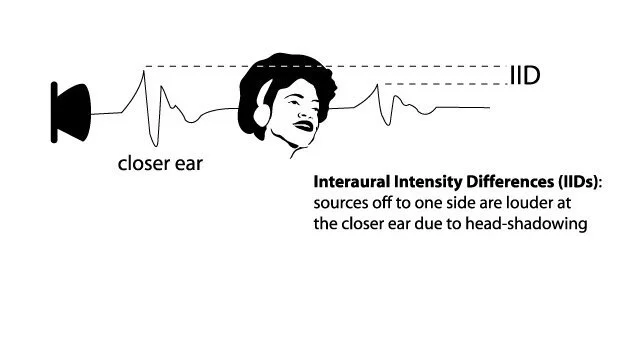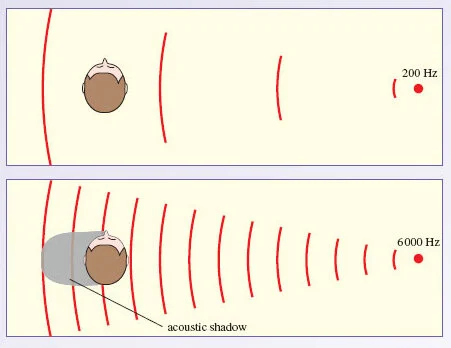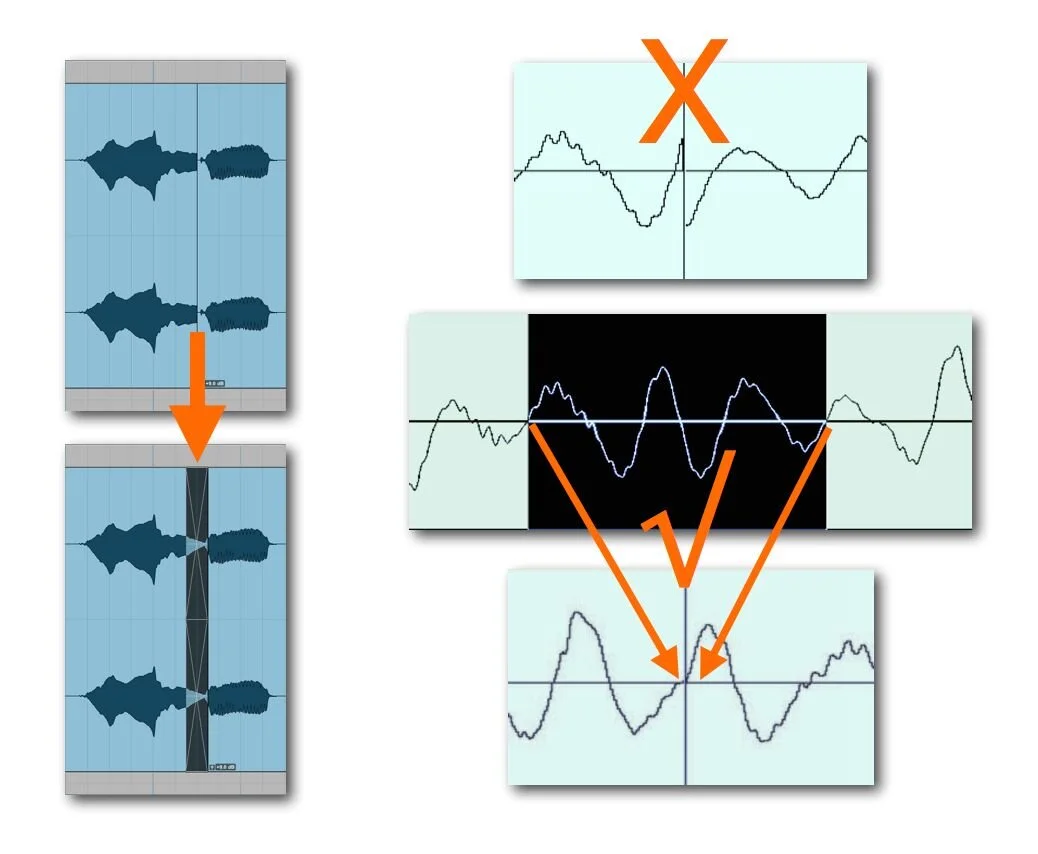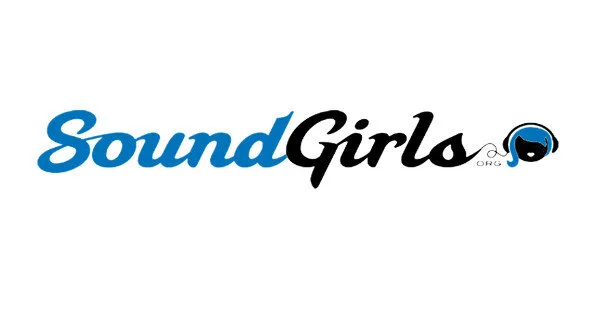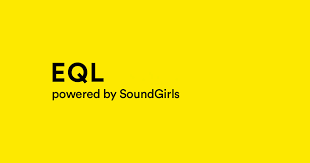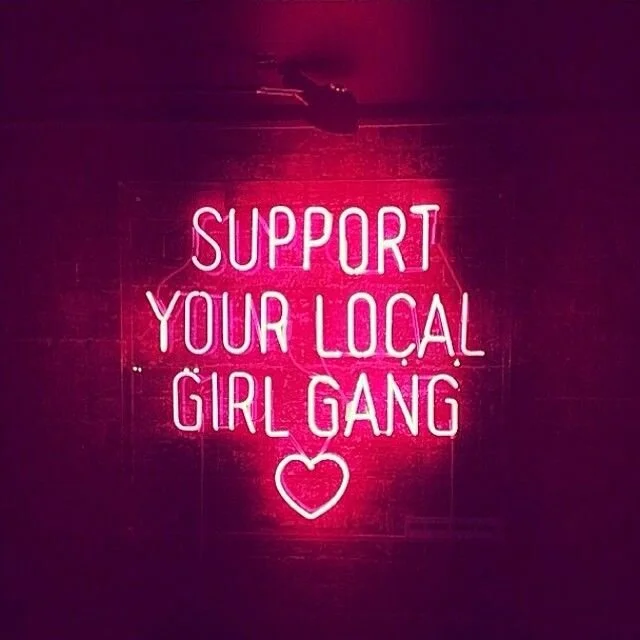THE BIG BRISTAL BLOG
A PLACE TO LEARN, ADVANCE, AND INSPIRE ARTISTS AND ENGINEERS.
The Whys Behind Hip Hop Production Choices
As a part of my research on the key characteristics of Melodic Rap, I’ve also began reading literature in musicology and hip hop. Although this topic feels like a stretch from spatial audio, the study is meant to be rigorous in many aspects, so it’s important to also understand the whys behind hip hop production, trends, and marketing. This ties into some recent headlines and reactions from the past few days that I’ll touch on at the end of this post.
In reading Amy Coddington’s book “How Hip Hop Became Hit Pop: Radio, Rap, and Race” (highly recommend), I was struck with many of the powerful statements made. This is because as I was going through Billboard Charts, Grammy Nominations and the like for my research, I kept finding instances of artists being put into rap and r&b categories, where the music is definitely Pop/Top 40. And after listening to many of these songs through a recording analysis approach, it’s not because of stylistic differences. So when I read the following section from Amy’s book, I felt validated in these thoughts and observations:
For most of the last century, the recording industry has been organized according to two intertwined principles: the assumption and subsequent demand that Black and white artists make different styles of music, and the simplification that consumers and performers of a genre share similar racial, ethnic, or class identities. This organizational structure influences how music is produced, promoted, and consumed. Record companies separate music made by and for people whom they consider outside the mainstream into Black, Latin, country, or other departmental divisions, and these departments encourage artists to design their musical wares for what they consider to be the same sorts of nonmainstream audiences…While this structuring is most often described using the language of genre, it is primarily about identity. “No other industry in America,” reported the NAACP in 1987, '“so openly classifies its operations on a racial basis”
Coddington, Amy. How Hip Hop Became Hit Pop: Radio, Rap, and Race (p. 17). University of California Press. Kindle Edition.
I bring this up because of the industry’s response to Beyonce’s two recent Country singles, “Texas Hold Em” and “16 Carriages”. We are seeing the media decide what to label the music, such as “Country Leaning” and “Country Themed”. We see this often. Remember when IGOR was nominated (and won) the Grammy for Best Rap Album in 2020? His response to the nomination was:
How does this relate to my study on immersive mixing approaches for hip hop? I find a deep responsibility to honor the genre that has welcomed me with open arms and taught me so much as an engineer. I cannot justify doing a study within hip hop without acknowledging the complex and many times unfair landscapes artists have to deal with. Additionally as an engineer and researcher, I’m really trying to understand the production decisions we instinctively do. Does the 808 and kick really make or break the song? What if more time was spent on vocal production rather than using not so great vocal recordings (not always the case, but let’s be real here). Does the background vocal reallllly need a telephone effect?
I’m asking these questions because as I am in the middle of my recording analysis of Melodic Rap, I’m learning a lot about these sonic choices - what seems to be true and what isn’t. I’m questioning many mixing “best practices” now. Is it best for the record or is it because that is what is expected so artists can be boxed away into simpler categories, limiting their potential. This might seem trivial to some, but we are working in a time where mixing trends spread like rapid fire on reels and tik toks without any explanation or cause. I hope this encourages some reflection the next time you work out a mix and I hope we can start welcoming this idea of intentional mixing.
Intentional mixing - an approach that considers the musical thoughts behind shaping a mix
These posts are thought dumps while completing my research so please excuse any grammatical errors. Thank you for reading!
Research Update Jan 2024
Research Update Jan 2024
Hi All!
I know I have mentioned the words “research”, “phd”, “study”, A LOT without much context of what I am doing, why I’m doing it, and how. Well, now that I’m three months in and have some initial data collected, I finally feel like I can start sharing this journey without it sounding like complete excited word vomit (although I will treat this post like a thought dump lol)
For some background, in grad school, I studied binaural mixing of popular music. Between 2015 and 2017 (before the Atmos boom lol) I was really interested on how we could implement binaural audio on popular music consumption. I found psychoacoustics, 3D audio formats, and 3D recording techniques absolutely fascinating thanks to my professors and peers. Having done that research I wanted to get some real work in the industry. I’ve always been genuinely motivated to balance academic knowledge with industry practice. And oh boy, did I get industry practice. I don’t think I slept between 2015 and 2021.
Now with some solid industry experience and an immersive audio takeover in our industry, I’m revisiting a similar topic with specific goals. First off, I’m really interested in studying Melodic Rap, not only because its a genre that I have worked in a lot, but because modern rap/hip hop doesn’t get enough attention. Outside of social and urban contexts within musicology, we don’t see a lot of folks giving it attention - and it deserves it! It is a popular music genre and many of today’s top of the charts artists have released music that fits that the style. I think a lot of studies that are in immersive mixing or binaural mixing treat popular music as one giant genre and we should be more specific with our approaches - which is where my study comes in.
If you have completed my first PhD study, then you’ll understand now why I asked about your perceptions of the genre. Not only am I doing an objective approach to this study, but I want to understand listener expectations of the mixes. This is so that I can later apply psychoacoustic principles to build upon these expectations and maximize on mixes in immersive formats. The songs that were named will be studied by me and will also be analyzed using a machine learning approach. Both the subjective and objective data is going to inform the next steps of this study towards building a more refined immersive mixing approach. Get in touch if this interests you!
Christal
Announcing Mentorship Opportunities!
I’m excited to announce that I’ll be hosting three-month mentorship periods. The first round starts in November.
Who is this for?
Anyone in the audio industry looking for some sort of guidance. We’ll plan out a goal that you would like to achieve whether it is understanding a topic or finishing a killer mix. I will try my best to help guide you and answer questions you might have whether audio specific, navigating the studio workplace, being a freelancer, etc.
How to apply:
1) Follow me on Twitch
2) Submit your application here
Both steps must be completed to be considered.
How it will work:
We’ll come up with a schedule based on our joint availability. This can be a casual conversation we have once a week or we can do something more in-depth virtually. I can only handle a few at a time so for those that don’t get selected this round, the next round will be available in a few months. Until then, I’ll host more general discussions on Twitch open to everyone.
Why am I doing this?
I get asked about doing this constantly and the truth is it is something I have wanted to do for a long time. I’m excited about this three-month structure and I am hoping it allows us to form valuable relationships. Please share if you know anyone who might be interested.
Thank you!
Fall Reading List
Nerd Alert!
With the weather cooling down, I added three audio focused books that you might want to dive into while cozying up with a warm drink.
Immersive Sound
The Art and Science of Binaural and Multi-Channel Audio
Edited By Agnieszka Roginska and Paul Geluso
Publisher Book Description:
“Immersive Sound: The Art and Science of Binaural and Multi-Channel Audio provides a comprehensive guide to multi-channel sound. With contributions from leading recording engineers, researchers, and industry experts, Immersive Sound includes an in-depth description of the physics and psychoacoustics of spatial audio as well as practical applications. Chapters include the history of 3D sound, binaural reproduction over headphones and loudspeakers, stereo, surround sound, height channels, object-based audio, soundfield (ambisonics), wavefield synthesis, and multi-channel mixing techniques. Knowledge of the development, theory, and practice of spatial and multi-channel sound is essential to those advancing the research and applications in the rapidly evolving fields of 3D sound recording, augmented and virtual reality, gaming, film sound, music production, and post-production”.
I recommend this book if you have any interest at all in immersive audio. The editors were both my professors at NYU and are some of the top experts in the field.
By Leslie Gaston-Bird
Publisher Book Description:
“Women in Audio features almost 100 profiles and stories of audio engineers who are women and have achieved success throughout the history of the trade. Beginning with a historical view, the book covers the achievements of women in various audio professions and then focuses on organizations that support and train women and girls in the industry. What follows are eight chapters divided by discipline, highlighting accomplished women in various audio fields: radio; sound for film and television; music recording and electronic music; hardware and software design; acoustics; live sound and sound for theater; education; audio for games, virtual reality, augmented reality, and mixed reality, as well as immersive sound”.
This should be included on everyone’s bookshelf as a history book that highlights some incredible pioneers in the audio industry.
Al Schmitt
Publisher Book Description:
“In this memoir of one of the most respected engineers of all time, you'll discover how a very young boy – mentored by his uncle Harry – progressed through the recording world in its infancy and, under the tutelage of legendary engineer and producer Tom Dowd in his heyday, became one of the all-time great recording engineers. Today, Schmitt continues as an unstoppable force at the top of the recording world, with his name on megahits from the likes of Paul McCartney to Diana Krall to Bob Dylan. His credits include a veritable who's who of the music world.
Reading the compelling accounts of Schmitt's life in the studio, you'll see how he has been able to stay at the top of his game since the 1950s, and you'll experience what it was like behind the scenes and in the studio during many of his historic, impactful recordings. Schmitt also shares many of the recording techniques and creative approaches that have set him apart, including his use of microphones, effects, and processors, and the setup diagrams from many of his highly lauded recording sessions”.
Al Schmitt was an absolute legend both in and out the studio. This book is an opportunity to learn about his incredible journey while also getting some insight about some of his most iconic sessions.
Immersive Audio Series: Pt 2
A continuation of the Immersive Audio Series!
In Part 1, I covered some of the Psychoacoustic aspects of Immersive Audio. This included discussing terms like Interaural Time Differences, Interaural Frequency Differences, and HRTFs. The Physical Acoustic contributions are still related to these terms, which I’ll cover this week.
Sound localization is greatly impacted by the physical acoustic aspects of a listening environment. When a sound directly hits the listener’s ear, this sound is least interfered with and most accurately represents the sound (direct sounds). On the other hand, this sound is also affected by room reverberation, room textures, objects in the environment, and the body of the listener. This sound is now compromised by those interferences, called indirect sounds [1]. Sound sources are therefore not so easily identified as coming from a single point.
Example of direct and indirect sound paths in a room [2].
The distance from the sound source to the listener also impacts localization. Distance affects the amplitude of a sound as stated by the Inverse Square Law. “As a sound wave propagates spherically, the sound energy is distributed over the ever-increasing surface diameter of the wave front surface. The Inverse Square Law teaches us that for every doubling of the distance from the sound source in a free field situation, the sound intensity will diminish by 6 decibels” [3]. This important to keep in mind when mixing for immersive formats.
Illustration of the Inverse Square Law [4].
The coordinates used to map a sound source are Azimuth and Elevation. “Azimuth is defined by the angle (θ) between the source location and the median plane at 0° azimuth (projected onto the horizontal plane) and elevation is the angle (δ) between the source location and the horizontal plane at 0° elevation (projected onto the median plane)” [5].
Why is all this relevant? I know, it sounds like a lot of technical terms and definitions, but it’s actually really cool how all this plays into how we perceive sounds around us. If sounds are familiar, then the listener can more accurately pinpoint the sound source [6]. But when the sound is unfamiliar, more information is needed to better localize the sound. As the engineer, whether you are working on sound design or music mixing, sound source placement needs to make sense to the listener. Depending on where in the 3D space you are placing sounds, the sound can be affected by artificial room filtering and it can be attenuated, for example, if placed far in the virtual space.
A good tool that can be used to start mixing in a 3D space is the Gaudio Works plugin. It provides a visual map view that shows you the azimuth and elevation coordinates of the sound sources you are placing in your sound field. I’d also recommend exploring similar plug-ins so that you can compare and hear the differences between each.
[1] Kendall, Gary S. A 3D Sound Primer: Directional Hearing and Stereo Reproduction. 1995.
[2] ROOM ACOUSTICS, THE BASIS FOR HIFI AUDIO. (2016, March 28). Keep Coding. https://blog.keepcoding.ch/?p=715
[3] Acoustics 101 - learn about acoustics. Acoustical Surfaces. (n.d.). Retrieved October 8, 2021, from https://www.acousticalsurfaces.com/acoustic_IOI/101home.htm#:~:text=The%20Inverse%20Square%20Law%20teaches,will%20diminish%20by%206%20decibels.&text=The%20intensity%20of%20the%20sound,wavefront%20from%20the%20signal%20source.
[4] Audio Calculators. (2021). Extron. https://www.extron.com/calculators/inverse-square-law/?tab=tools
[5] Roginska, Agnieszka Paul Geluso. Immersive Sound: The Art and Science of Binaural and Multi-Channel Audio (Audio Engineering Society Presents). 2018.
Welcome Back!
Hey there audio friends! The great thing about being an active audio engineer is that sometimes you get so so busy, you literally don’t have time for other things. Some updates:
As you can tell, I did a little of rebranding. I’m so happy with it. I hired a wonderful latinx graphic designer, Spacehoes, check her out!
I recently completed the Dolby Atmos certification course offered by Avid. It was very cool to learn the software with other leading professionals in the field! I’ll share more on that soon.
On a more personal note, I did end up welcoming a pup to my home which has been a lot of work! But she is wonderful and also a great studio pup (even as a growing Great Dane). As an engineer, its so easy to not socialize for DAYS. Adding a pup to my life encourages me to get out for some sun and take mix breaks often. Highly recommend a studio pup!
Lily, (aka Dane Lillard) at No Name Studios.
Something else I also did to take care of my mental health while balancing endless work was join a running club. Running always has been my form of relaxation. This time a joined an ultra club, so possibly running a 100 mile race in the future.
Lastly, I have to mention how great its been using the EngineEars website over the past few months. Being so busy makes it hard to send out invoices, keep track of multiple clients and projects, and just basic file management. EngineEars thankfully takes all the stress out of the process and lets me just focus on the task at hand - mixing. I highly recommend checking it out whether you are an engineer or artist.
That’s all the updates for now! Thanks for hanging by while the site went quiet for some refreshing.
Immersive Audio Series: Pt 1
Immersive audio has been in development for many decades which is why it is so exciting that it has developed into something that is more accessible to consumers and not just audio professionals and hi-fi audiophiles. I went back to some of my old grad school readings to help break down some of the foundations of spatial audio since I get asked about it a lot. These posts aren’t academic papers but just attempts at giving a basic understanding of the foundations. I’ll start by covering the three foundations of spatial audio (Psychoacoustic, Physical Acoustic, Auditory Neurology) and then expand on how this relates to today’s immersive technology. Ref 1
Today, I’ll just break down the psychoacoustic side. Ears are so unique to each individual that they can be used as an IDing method to identify people. Even further, each ear is different and is separated and shadowed by the head. Therefore, sound reaches each ear differently and greatly impacts spatial perception which is called Interaural Differences. These differences are further broken down into Interaural Time Differences and Interaural Intensity Differences.
Interaural Time Differences relate to the actual time differences between the ears. A sound coming from the right side of a listener will arrive at the right ear first than the left ear.
Ref. 2
Interaural Intensity Differences relate to how the shape and shadow of the head affects the loudness and frequency distribution of sounds. A sound coming directly to the left ear will be louder on the left ear than the right ear. Furthermore, the head blocks higher frequencies because of how short those frequencies are. The longer low frequency wavelengths are able to diffract around the shape of the head.
Ref. 3
Ref. 4
These Interaural measurements are represented in Head Related Transfer Functions (HRTFs). HRTFs superimpose spatial characteristics on audio. HRTF measurements take into account how the human body (head, shoulders, ear shape, ear canals) affect sound cues. By using spatial coordinates for distance, elevation, and azimuth - sound can be better localized.
All of the above information contributes to binaural audio. Binaural audio is the method of recreating these spatial cues over headphones. It’s these HRTFs that make binaural audio possible. But as you might have picked up on, HRTFs are dependent on an individual’s head shape, ear shape, upper body build, etc. So what sounds good for one person might sound like absolute garbage to someone else. It’s very difficult to make a binaural experience feel realistic for all listeners. Here’s an example of HRTF differences (use headphones).
Why is this information important? With binaural audio becoming more accessible to consumers and as you might start to experiment with it at home, think about how frequencies may or may not translate to a binaural mix. For example, higher frequencies tend to relate to an object source above the head, so putting lower frequency sounds on that height plane might not sound accurate. This information might help you better choose which binaural plug-ins or software you prefer. Some might better or worse to you for a reason. That’s it for now!
Ref. 1 - Kendall, Gary S. A 3D Sound Primer: Directional Hearing and Stereo Reproduction. 1995.
Ref. 2 - Burk/Polansky/Repetto/Roberts/Rockmore. The Transformation of Sound by Computer: Localization/Spatialization.
Ref. 3 - McMullen, Kyla. Interface Design Implications for Recalling the Spatial Configuration of Virtual Auditory Environments. 2012.
Ref. 4 - https://www.open.edu/openlearn/science-maths-technology/biology/hearing/content-section-12.4. 2021
Translating Mix Notes
Interpreting mix notes can be hard! If you are like me and have never met your clients in person, it can be *extremely* difficult to determine just what the requested revisions are. Obviously this is subjective but you can notice some trends in the mix notes you might receive. Here is my take on some keywords and what you can do to your mix to help achieve the edits your clients are asking for:
Energetic: This word screams dynamics to me. Not strictly in the sense of compressors but in terms of automation. What can I do to the mix to add energy that might not be captured in the performance? Should I automate drum levels? Should I change the reverbs between the hook and verses? Add and subtract throughout your mix to create energy.
Present: I can interpret this word one of two ways. Either adding top end or literally just bringing up levels so that something is more up front in the mix. Bringing up levels doesn’t necessarily mean adding gain. Remember, gain can also be added through EQs.
Big: Reverb and delays baby! This adds space and dimensions that can seriously add width to your mix. I absolutely love mixing my reverb and delays to make mixes BIG. I sometimes overdo it and wash out my mixes T__T but I just love creating space.
Polished: Surgical EQ time. Focus on taking out the mud, but don’t confuse mud versus body. Remember, a little goes the long way.
Tight: Stacks holding you back? Assuming you already have aligned your vocals to your liking, I recommend a few things. Take out the breaths, esses, and other mouthy sounds from your additional vocals. Try finding a nice balance where you can keep your lead focused with the stacks nicely tucked underneath or spread apart from the lead.
Movement: Depending on the context, movement can be related to dynamics. Here, I’ll address movement notes in reference to the stereo field by panning. Here, I’ll try playing around with manual panning automation, Autopan, PanMan, BrauerMotion, and rhythmic delays.
Interesting: Get creative. The good ol’ oohs and aahs : beat drops, reverse reverb, filters, etc. These little tricks are always good to use when a client asks for something to be more interesting.
What are some of your common mix notes and how do you adjust your mix in response? Comment below!
About Being a Studio Intern
Sometimes, becoming an engineer at a studio starts with being an intern. This can be a good opportunity to show your face around the people you want to shadow and learn from. While it can seem rather straightforward on how one can be a good intern, there a few things I recommend if you find yourself in this new position.
Going on a run?
Yes, doing runs can be a part of the job when just starting off. This can mean runs for food, runs for supplies, runs to audio stores. Things at a studio can happen quickly so the demand for items can be urgent. You want to get things right on the first try. This means:
Write things down.
Again, this seems straightforward, but time after time I see folks trying to remember long specific lists off the top of their head and getting things wrong. It hurts nobody to write things down on your Notes app or on a piece paper. Do it!
Double check everything
Whether you are handling session set-ups or picking up food, double check everything. If you are asked to set up a mic for a session, test it, and then test it again. If you are picking up a cheeseburger with no onions, make sure the food you are bringing has no onions. It’s the little things that make people want to rely on you. Once you are a reliable intern, you may be considered to be someone’s assistant because you are reliable. Make yourself trustworthy and useful no matter the situation.
Learn your environment
There can be a lot of downtime as a studio intern. Some studios start you on the early day shifts until you are ready to move onto the night shifts. Some studios also don’t allow you to touch any equipment without supervision from more senior engineers. Whatever the rules are in your environment, you can adapt to them and still make the most of your experience. You can do this by learning the inventory. Know what is available, what works, how it works, read the manuals, try it virtually through plug-ins. Become familiar with the patchbays. Learn it all.
Making it Easy for your Mix Engineer
Are you committed?
As a very detail oriented mix engineer, I spend a lot of time clip gaining, debreathing, automating, processing effects, etc. That is why it can be frustrating for me when stems are changed or swapped out during the mix process. This means I have to essentially start from the mix prep stage. Be committed to the the production. Be committed to the vocal takes. Try your best not to waste people’s time.
Provide a Reference
We can’t imagine what you hear in your head or how you want your song to sound. Providing references of already released music isn’t doing your own song justice. Provide the rough bounce or demo that was printed at the end of your recording session so that we can go off of that, expand, and polish. This is especially important for matching timing of effects, drops, and background vocals that would be hard to determine placement otherwise.
Carefully listen before you respond
Sometimes I get mix notes three minutes after sending files out. I highly recommend sitting with a mix for some period of time so that you can confidently make mix changes. Really think about what is sitting with you and not sitting with you so that you can clearly communicate this to your engineer.
Taking Control of Your Work Hours
The wonderful thing about being an active engineer is that some weeks are extremely busy. Often times, too busy…like you can’t escape even if you tried.
…BUT THEN, you are finally able to get out for some fresh air. I’ve had time to get farther into Zelda on my Switch (holiday gift from Alex Tumay, best boss ever or what?), prepare for a puppy, and watch the Q: Into The Storm doc series on HBO Max. If you wanna chat about cheat codes or puppy breeds, hit my line!
A self-care routine for engineers isn’t a normal one. We can’t come home at 5pm and call it a day. Often times, our days start at 5pm and end about a week later. These unpredictable schedules can lead to burn out and can seriously affect not just the quality of your work, but also your mental health. Taking a break is definitely a luxury, but even if you can only do it in small increments, I highly recommend it. One way of approaching a healthier lifestyle is by managing your work schedule. Here’s some advice on it:
Don’t overbook yourself
When I first started out, I said yes to everything. Every session, every booking inquiry - e v e r y t h i n g. This is great for building a portfolio and gaining experience , but eventually you learn that being busy isn’t super valuable. It’s more efficient to be able to carefully work on a few projects, rather than rush through a ton. Book what you can handle and diligently work on.
Be selective
Similarly, be selective with the work you take. For myself, I learned that I actually spent just as much time on 2-track mixes than stem mixes because of how limiting the circumstances were. Due to that, I limited the 2-track mixes I booked per month. Likewise, its more valuable to take recording sessions with returning clients, than clients that would just request 2-3 hour sessions. It would take me more time commuting than actually being in those sessions. Be picky! Take work with clients you enjoy communicating with and clients whose music you are excited to work on.
Know your value
Have a rate that matches the amount of time and effort you are putting into your mixes and sessions. Your goal should be able to make a living engineering. The best thing I did for myself was start turning down work that was below my budget. It was hard to do because I was used to saying yes to everything. But clients that really do want to work with you will find a way to make it work, trust me!
Studio Travel Bag
Back when I was a young intern, I learned the hard way on what was essential to carry with me. There were many times it felt like I saved the day because I had spare 1/4 inch adapters in my bag in the middle of the night. More often than not, I would be spending my nights and mornings at the studio, with no chance to freshen up so the essentials didn’t only include studio related things. I eventually had a small duffle bag filled with my necessities - from random cables to toiletries to a blanket. Read below for a list of what I carried with me:
Office Related
Notebook
Pens/Pencil
Colored Sharpies
Technical
1/4 inch adapters
Thumbdrives
Phone Charger
Dongles and Mac specific adapters
Your own laptop setup
Toiletries
Toothbrush/Toothpaste
Deodorant
Change of Clothes (don’t forget underwear and socks!)
Blanket
This might seem small, but making yourself available by not having to run out for things opens up so many opportunities. It also shows preparedness not just for yourself but also for your work. Think about what you would need or what you can contribute. Share any ideas you might have in the comments!
Staying Active During Vocal Sessions
Often times, artists release unmixed and unmastered roughs from recording sessions. While this is sometimes not the best, it makes it even more important to get the best rough mix possible by the end of your session. Sometimes, sessions don’t allow for you to dive deep into freaking your mix, but that is still no excuse to not do your best with the time you have. I say this because there have been many times when I see engineers that are starting out only press record and then glance at their phone the rest of their session. There are so many missed opportunities for getting your session right. If you are tracking vocals and there is even the slightest downtime in a session, I’d recommend doing a mix of the following things to start polishing off your recording.
De-breathing
Go through your vocal takes and listen for any breaths that poke out. I don’t remove breaths completely but I do some clip gaining so that there is more balance. Sometimes an artist is punching in n out of takes and the breathes might also sound unnatural.
De-essing
Similar to my process of de-breathing the vocal takes, I also recommend doing some de-essing. I won’t say go crazy with the editing during the recording session, but I would listen for the harshest culprits and bring those down in level.
Fades
Messy comps can be very distracting. When putting together different vocal takes, blend them as best as possible with fade ins/outs and leveling (more on that below). The style of “punching in” takes demands that takes be faded together as smoothly as possible.
Leveling
Artists tend to move around while recording whether from excitement or emotion. You’ll be able to hear these movements with drops or jumps in levels. You can also visibly see certain waveforms be smaller or larger than the rest of your takes. I would suggest evening it out so that everything is a smooth listen.
These are just a few things I do without even thinking while in recording sessions. It helps to be attentive during all points of recordings sessions, not just while recording. It’s so amazing when an artist comes back from a break and you already started adding sauce. This will make them want to hire you for a mix so try not to do the bare minimum and just press 3.
Soundgirls: Ask the Experts
I was unable to send out a newsletter last week because I was SO excited about the Soundgirls panel I had later that day. Update…it was AMAZING. I learned so much and had such good conversation. If you were unable to watch, below is a video of the conversation we had. Some conversation highlights were
1) what we consider digital vs. analog recording
2) advantages and disadvantages of recording in vs. out the box
3) first purchases when diving into analog gear
Thank you so much to Soundgirls for having me and the other talented panelists. It was truly a learning experience.
Reverb Enhancer
I say this many times, but reading manuals reveal not just the how-to’s but also unique applications of tools. Today, I’m sharing one of my commonly used applications that I discovered by reading the manual to Plug-in Alliance’s SPL Transient Designer. Please note it’s not the tool, but application, so if you don’t have this particular plug-in, it is ok. Get crafty and think of how you can do something similar to your own mixes using the tools you have available.
Plug-In Overview
SPL Transient Designer is a dynamic processor. With both attack and sustain knobs, both can be amplified or attenuated, or lengthened and shortened, respectively. This specific plug-in has a mix knob which allows it to be processed in parallel. With these functions alone, it is an excellent transient shaper. But combined with other effects, it can go beyond simple transient shaping and push effect tracks even further. Below is how I use this plug-in with reverb to add space and depth to my background vocals, but it also can be applied in many different manners.
Transient Designer + Reverb
“Try looping the left and right output of your reverb through the Transient Designer Plus.”
The manual suggests inserting a reverb before the transient designer through two mono tracks panned hard left and right. There are two different ways to go about this. Turn the “Attack” all the way up and the “Sustain” all the way down. This enhances the reverb at the start while reducing the reverb time. Now doing the opposite can achieve a swelling type of effect. With the “Attack” turned to its minimum and the “Sustain” set to its maximum, the beginning of the reverb is lessened while the tail is enhanced. Of course, the effect depends on the reverb settings such as decay time. Play around with the settings of both the reverb and transient designer and see what you can achieve. For more ideas, visit the manual source here.
Resources for Women in Music
It’s Women’s History Month and I want to celebrate by highlighting organizations doing the work that matters. Educational resources that highlight both music, audio, and women are not many, but the few that stand are absolutely amazing. Visit their sites to join, donate, and learn.
Women’s Audio Mission provides courses, internships, job boards, and hosts fantastic events centered around women in audio.
She Is The Music has an online directory of producers, writers, and engineers and hosts events centered around the creation of music by women.
Omni Sound Project provides technical courses on audio production and engineering as well private classes by their talented teachers.
Women In Music has chapters worldwide offering resources to women in music not limited to A&Rs, songwriters, attorneys, managers, engineers, producers, and artists.
A directory of women in music listed with resumes and work portfolios making it a great resource for hiring.
A blog I love to keep up with, Soundgirls offers articles and events on topics ranging from live sound to mixing.
The Case for Manual De-essing
One thing I notice when working on masters is the prominence of sibilants in final mixes. This isn’t to say that engineers aren’t using de-essers. I also use de-essers in my vocal chain, but sometimes it isn’t enough. I absolutely feel like my mixes are so much smoother when I clip gain the esses in words.
It’s not enough to just de-ess the lead vocals. When there is a stack of backgrounds, harmonies, ad-libs, etc. - it truly makes a difference to clean up the esses in every vocal part. It allows for the vocals to be a source of clarity and not a distraction. I also like to de-ess my reverbs and delays. A tail of esses takes away from any upcoming lead vocals.
Another reason to do this manually is because de-essers might only look for one harsh frequency, but there are actually a few phonic sounds that should be attenuated. I tend to look out for:
“esses”
“chas”
“shhs”
“ffffss”
“thhh”
These phonic sounds tend to be harsh and truly can poke out in a mix. It is easy to tune out or forget about these minor details when tweaking other sounds like 808s. That is why I recommend adding this to your to-do list when prepping your sessions. I tend to do a manually de-essing pass when prepping my sessions for mixing. That way I don’t have to stop when balancing instruments or creating effects to go back and do these minor edits. It might sound like I’m being a obsessive, but it is this level of detail that can make a mix sonically good to enjoyable to listen to.
Creating a comfortable environment
Comfortable doesn’t mean easy. The workload doesn’t need to lessened. This is what we mean.
Hire more than one woman
Having only one woman on your staff does not make you diverse and inclusive. Often times, being the only woman drives women away from the space. Make your space inclusive. Resumes of talented professionals are available on She Is The Music and the EQL Directory.
Think about their needs
Is my studio environment comfortable for women and non-gender conforming individuals. Are the bathrooms private? Do I keep women’s toiletries accessible for staff and guests? Do I provide mentorship that is applicable to their experiences?
Prevent objectification
Don’t hire perverts.
Don’t allow unprofessional behavior.
Don’t excuse inappropriate comments.
Upcoming Events
I’m so excited to be a part of two upcoming virtual panels. I highly recommend attending them because I will be alongside some of the most talented professionals in the industry. Information for both events can be found below.
New York Foundation for the Arts: Women Leading the Music Industry
On Monday, March 8 from 6:00 PM – 7:00 PM EST, New York Foundation for the Arts (NYFA) will present “Women Leading the Music Industry,” a free virtual panel discussion as part of New York Music Month Extended Play. The panel will showcase the expertise of Nikisha Bailey, Vice President of A&R Admin + Operations for Artist Partner Group; Christal Jerez, audio engineer; and Marietta Ulacia, Executive Director of the Afro Latin Jazz Alliance of New York. The panelists will discuss their career trajectories in the music industry and the roadblocks that they have overcome along the way. The discussion will provide an opportunity for women-identifying artists and professionals in the music industry to learn, network, and ask questions. Register here to attend.
Soundgirls: Ask the Experts: In-The-Box versus Out-Of-The-Box
Join us for a webinar on recording and the pros and cons of mixing in the box or out of the box. This webinar will focus on both ways of recording and discuss the pros and cons of each. This is not a debate on what sounds better or is better.
This is your chance to get your questions answered by Jess Fenton, Vira Byramji, Jasmine Chen, Lenise Bent, and Christal Jerez.
March 16 at 11 am PST/2 pm EST
Register here to attend.











![Example of direct and indirect sound paths in a room [2].](https://images.squarespace-cdn.com/content/v1/5d1a5d3fc7fcb40001b7d2d9/1633655404439-L9H4130QVOAIZM9J82ZW/stereo2.jpeg)
![Illustration of the Inverse Square Law [4].](https://images.squarespace-cdn.com/content/v1/5d1a5d3fc7fcb40001b7d2d9/1633655085956-FQ3U98UORB4GL84WPYHM/audio_inverse_square.jpeg)




